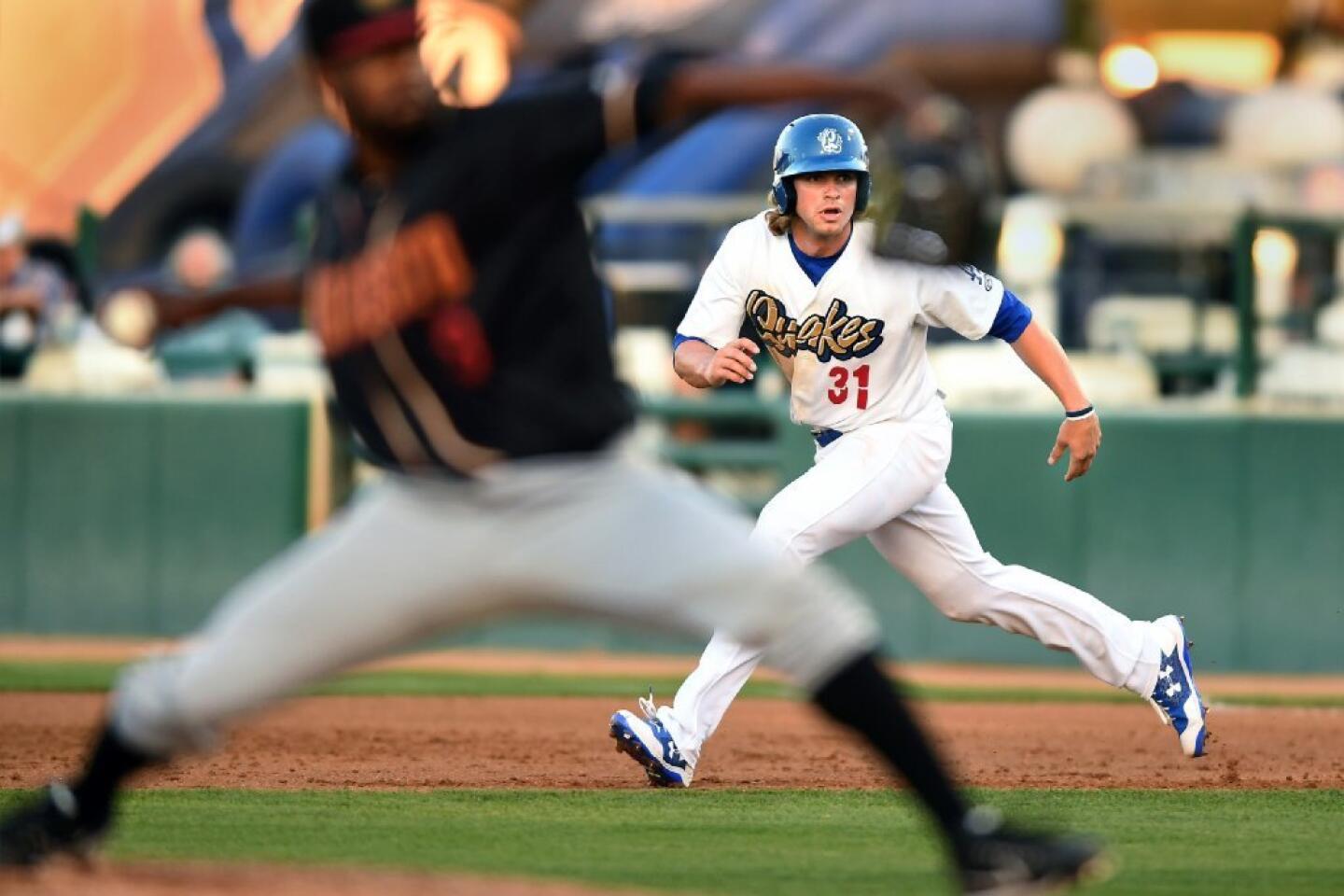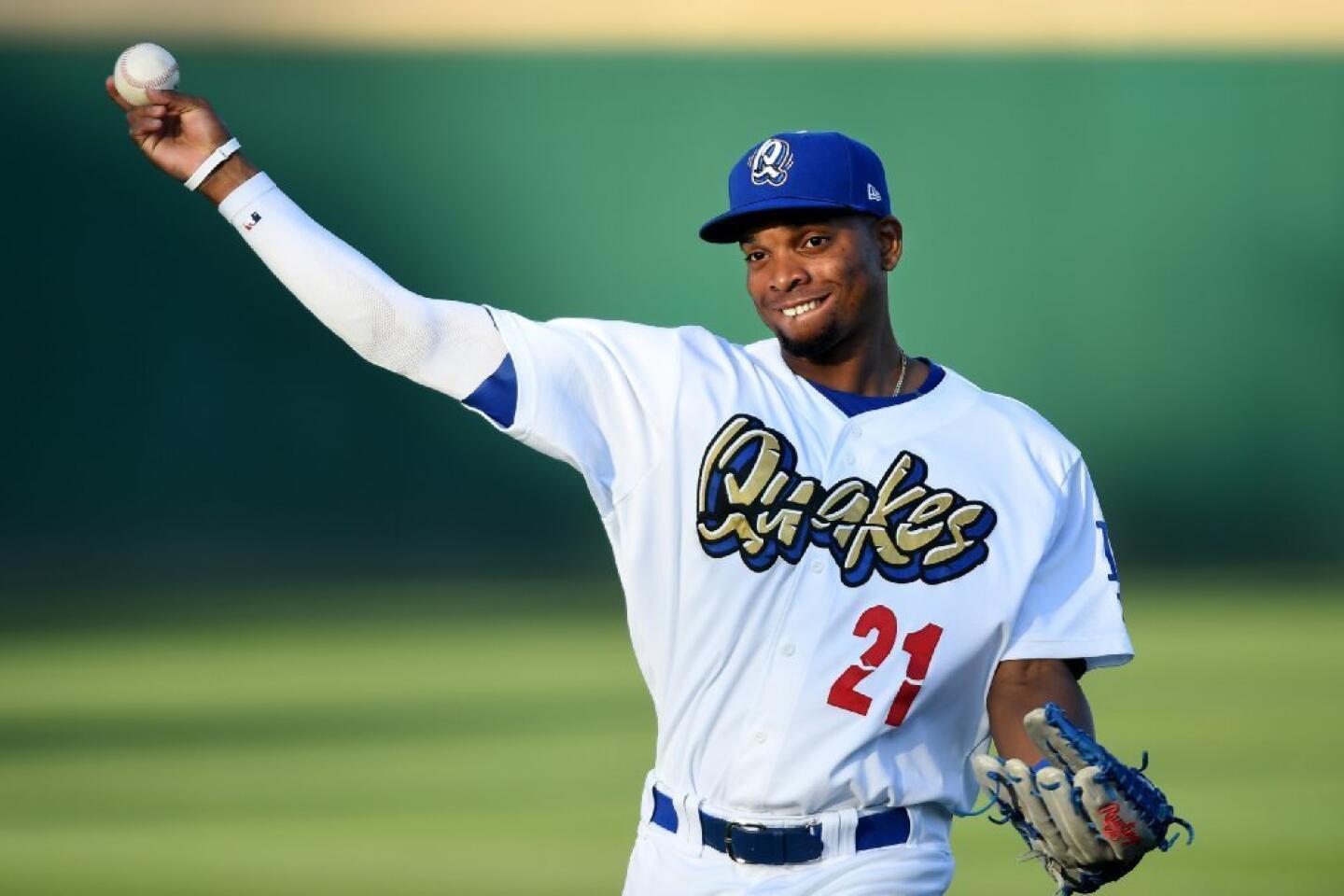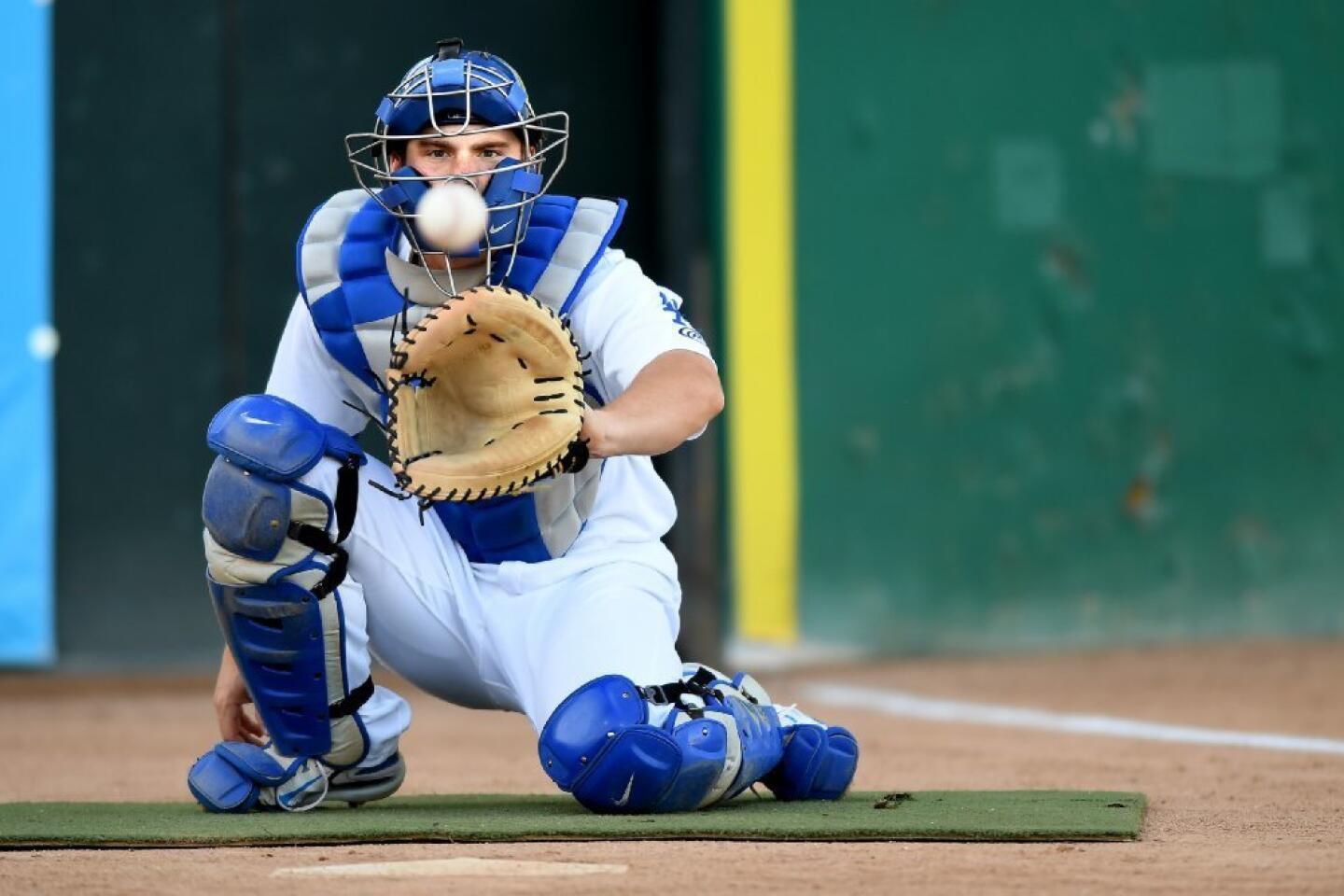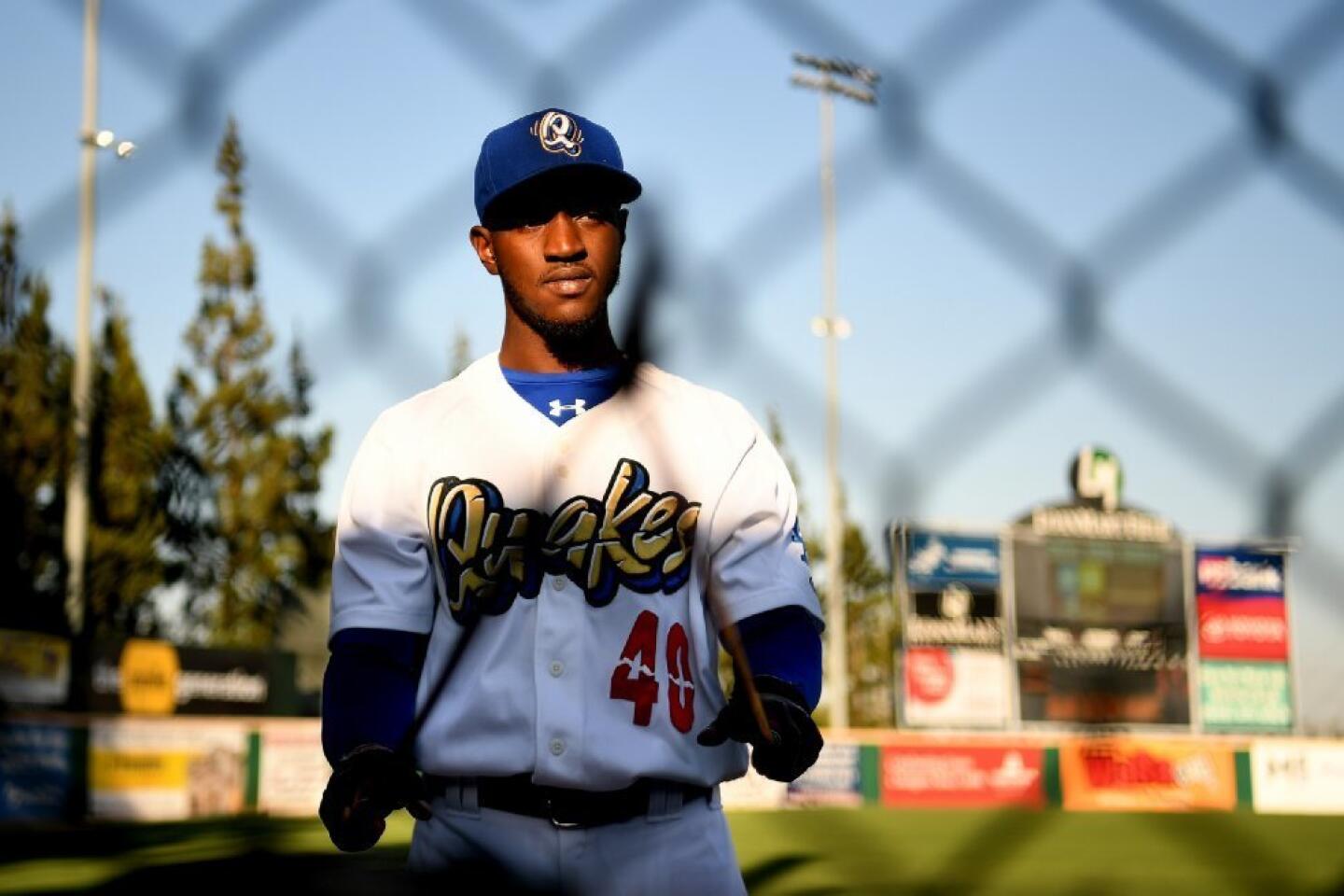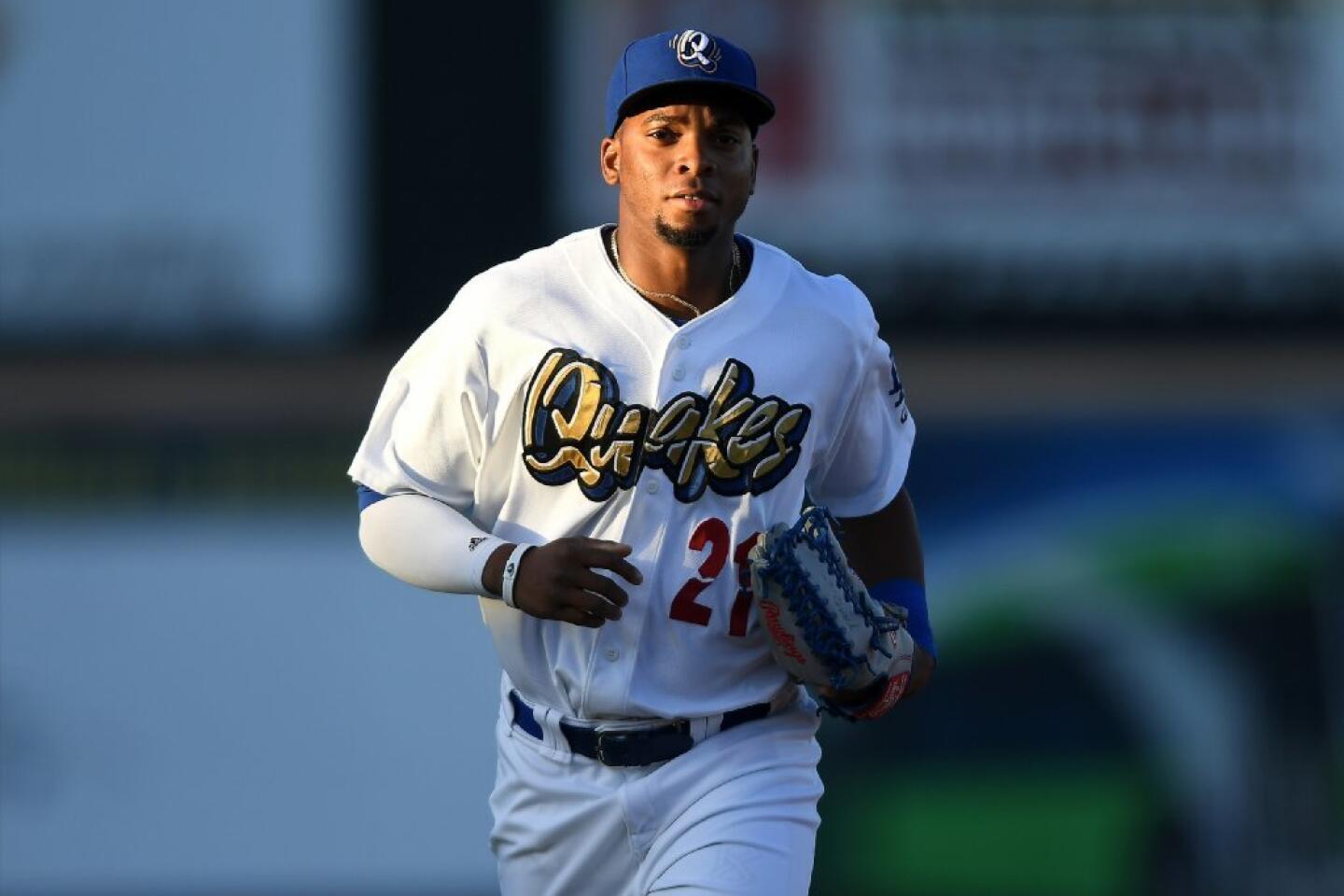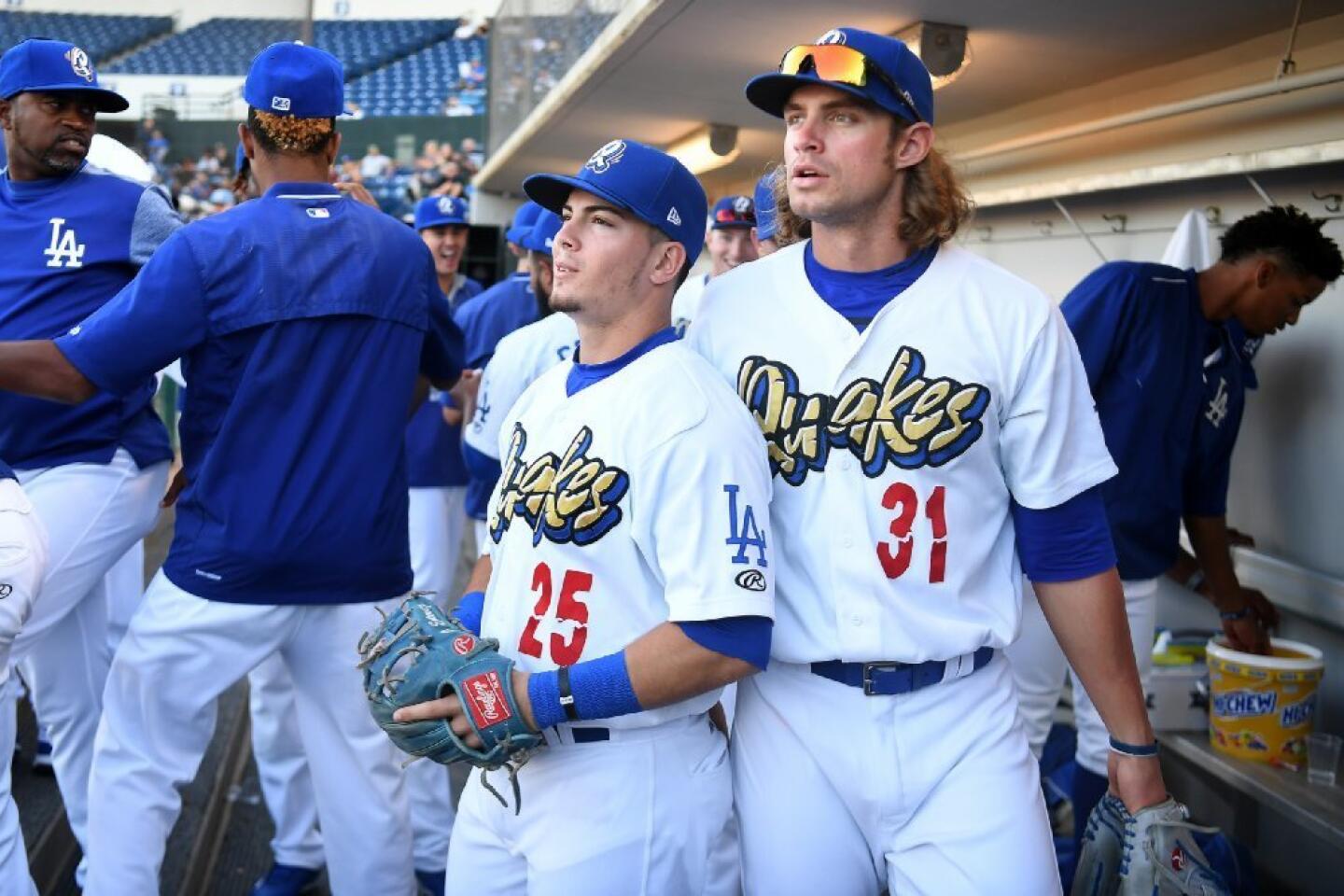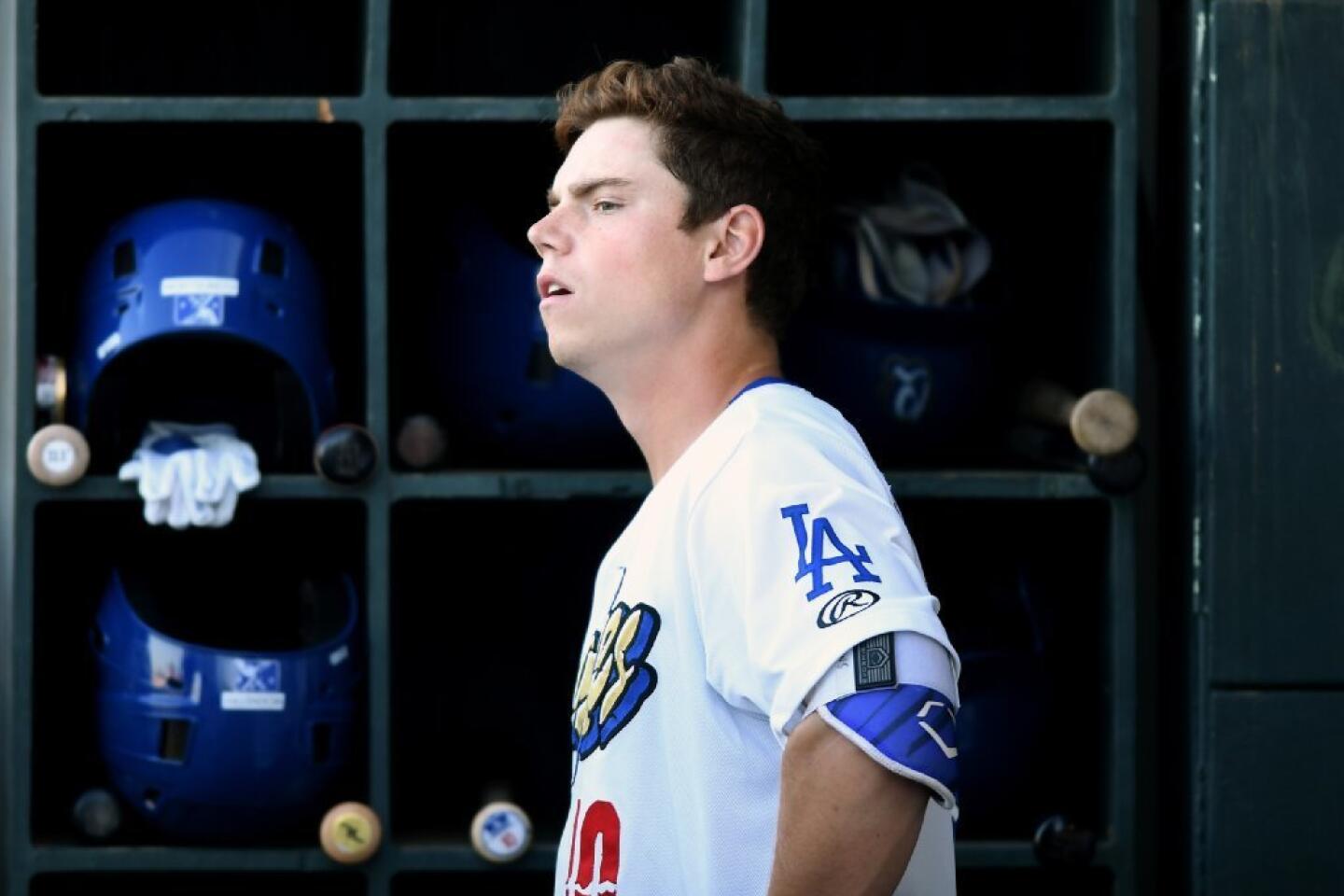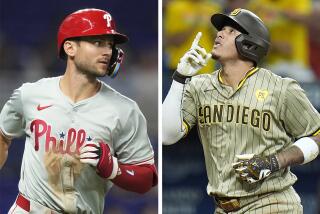Column: The future of the Dodgers is bright â just take a look at their local minor league team
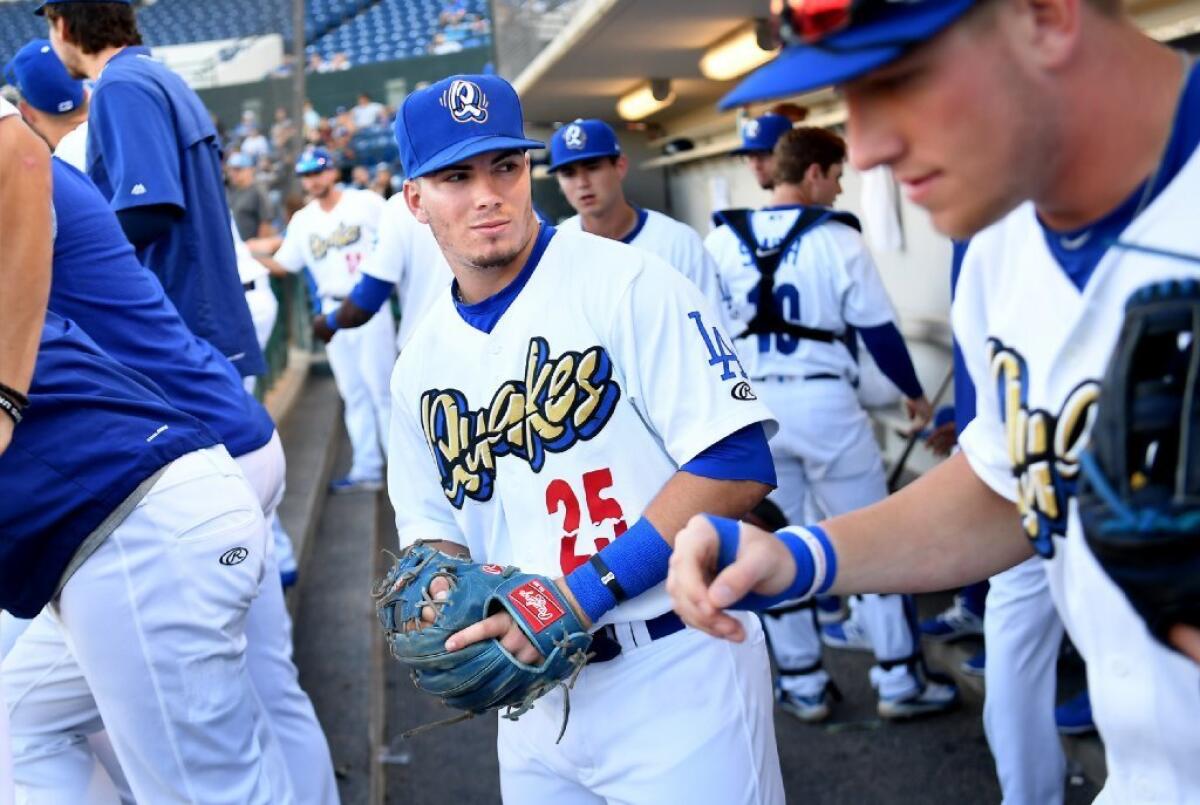
Thereâs more to the plan than transforming the disabled list into a taxi squad and searching operating rooms for starting pitchers.
What best represents Andrew Friedmanâs long-term design for the Dodgers is a collection of young players, the majority of them in their early 20s and only a year or two into their professional careers.
âQuite possibly the most talented minor-league team Iâve been associated with,â they were called by Friedman, the Dodgers president of baseball operations.
The Rancho Cucamonga Quakes, the organizationâs affiliate in the High-A California League, are the crown jewel of a farm system that was revamped in the post-McCourt era. The teamâs roster includes the most expensive group of international prospects in franchise history, as well as the first two draft classes of well-regarded scouting director Billy Gasparino.
The Quakes have a pitcher who effortlessly throws 100 mph and a first baseman who hit a ball harder than anyone at any level of the game has this season.
Opposing scouts arenât allowed to speak publicly about players from other organizations, but one from an American League team said there could be five or six future major league players on the current Quakes roster, and that didnât include Walker Buehler, a hard-throwing right-hander who was promoted last month to Double-A Tulsa.
âHands down, the best team in the league,â another scout said.
However, there are no guarantees at this level, only players with chances. And the reality is, little is known about this particular front officeâs ability to produce young talent. The most promising Dodgers to break into the major leagues the last few years were inherited from the previous regime. Ned Colletti was general manager and Logan White the scouting director when the team signed Corey Seager, Julio Urias, Cody Bellinger and Joc Pederson.
Whether the Dodgers become the franchise they envision â remember, Friedman came into town talking about multiple championships â will be determined by how this management team identifies and develops amateur players. The Quakes offer a glimpse of how the project is going.
There is Yadier Alvarez, a lanky 21-year-old with sleepy eyes and a whip of a right arm.
A Cuban defector, Alvarez received a $16-million bonus when he signed with the Dodgers two years ago. He was the top prize of the international amateur class of 2015-16 that cost the franchise close to $100 million.
If thereâs a future superstar on this team, itâs him.
âThe quietness of his delivery and still being able to throw 100 mph, you donât find that every day,â Quakes pitching coach Kip Wells said.
Alvarez is still in the early stages of his education, both on the field and off. He never reached the top league in his home country and is still learning some of the more fundamental aspects of pitching. Earlier this season, he had to be taught how to properly grip a four-seam fastball.
His numbers reflect his inexperience: He had a record of 1-2 with a 5.30 earned-run average through his first nine games, including eight starts.
There has also been a cultural adjustment. Alvarez, who politely declined to be interviewed for this column, has developed a reputation for showing up late to the ballpark.
He shares the clubhouse with two other high-priced Cuban prospects who signed around the same time he did, athletic outfielder Yusniel Diaz and slick-fielding infielder Omar Estevez. Diaz signed for $15.5 million, Estevez for $6 million.
Diaz entered the week batting a modest .255 with four home runs, but the 20-year-old is one of the youngest players in the California League. The player who started the season as the leagueâs youngest player was the 19-year-old Estevez, who was batting .233.
âItâs very different,â Diaz said in Spanish. âIn Cuba, you donât work the way you do here. Here, itâs more disciplined.â
And more physically demanding. Diaz was once a 17-year-old rookie in Cubaâs top league, which has 90-game seasons.
He said he is also facing a different style of pitching.
âOver there, itâs mostly fastballs, sliders,â Diaz said. âHere, they throw curveballs, sinkers, cutters, sliders.â
If the Cuban players represent high risk and high rewards, some of their teammates who were drafted out of college are viewed as safer bets. These players are ahead on the developmental curve, courtesy of the seasons they played in college, where the standard of baseball of comparable to the lower levels of the minor leagues.
Some scouts consider outfielder DJ Peters to be the teamâs best prospect. Peters, a fourth-round pick last year from Western Nevada Community College, has drawn comparisons to Jayson Werth. He was batting .254 with nine home runs through the end of last weekend.
Others evaluators prefer catcher Will Smith, the second of the organizationâs two first-round picks last year. Smith was batting .235 but had seven home runs. His calling card is defense.
âWill Smithâs catch-and-throw is elite,â Quakes Manager Drew Saylor said. âIâve never been around a guy who has that innate ability to get rid of the ball. He can throw from different angles. He can pick a backhand slider and throw it like heâs turning a doubleplay.â
Smith is also among several players working to expand his versatility. Chris Taylor reached the major leagues this year as an infielder but is now a center fielder. The current major league backup at catcher, Austin Barnes, is valued by the front office because he can play other positions.
Smith occasionally plays second and third base, explaining, âMaybe it will get me to the big leagues a little quicker.â
Other recent draft picks to emerge as top prospects include right-hander Mitchell White, left-hander Caleb Ferguson and shortstop Drew Jackson. And the teamâs most dependable starter this season has been Dennis Santana, a hard-throwing 21-year-old from the Dominican Republic.
But the most breathtaking performer is Ibandel Isabel, a 6-foot-4, 21-year-old first baseman from the Dominican Republic. Isabel has struck out in about 45% of his at-bats. However, when he makes contact the ball explodes off the bat.
Isabel blasted his league-high 14th home run of the season Tuesday, and his teammates light up when they talk about him.
Earlier this month, Isabel hit a ball that was clocked at 120 mph off his bat. The hardest ball hit in the major leagues this season was 119 mph, by Aaron Judge of the New York Yankees, who leads both leagues in home runs.
One of Isabelâs home runs from the first month of the season has become legendary.
âYou see the LoanMart?â asked White, the right-hander, pointing to the lettering high on the scoreboard behind the wall in right-center field.
âHe hit one on top of that and it bounced over,â White said. âIt was like a straight line drive.â
White said that was the moment he realized there could be something special about this group of players.
One rival scout, a longtime observer of the California League, said the last time he saw a High-A team this talented was the 2014 Lancaster JetHawks. Seven players from that team are now in the major leagues, including three on the parent club Houston Astros: Carlos Correa, Lance McCullers and Chris Devenski.
The 2015 edition of the JetHawks contributed four more players to the Astrosâ major league roster.
Today, the Astros have the best record in the major leagues. They figure to be World Series contenders for years to come.
The Dodgers could be there with them.
Follow Dylan Hernandez on Twitter @dylanohernandez
ALSO
Dodgers Dugout: A closer look at the puzzling decision-making by Dave Roberts about Clayton Kershaw
Dodgers pitcher Rich Hill searching for consistency as Reds come to town
Column: Dodgers have no chance without Clayton Kershaw, yet they risk antagonizing him
More to Read
Go beyond the scoreboard
Get the latest on L.A.'s teams in the daily Sports Report newsletter.
You may occasionally receive promotional content from the Los Angeles Times.
